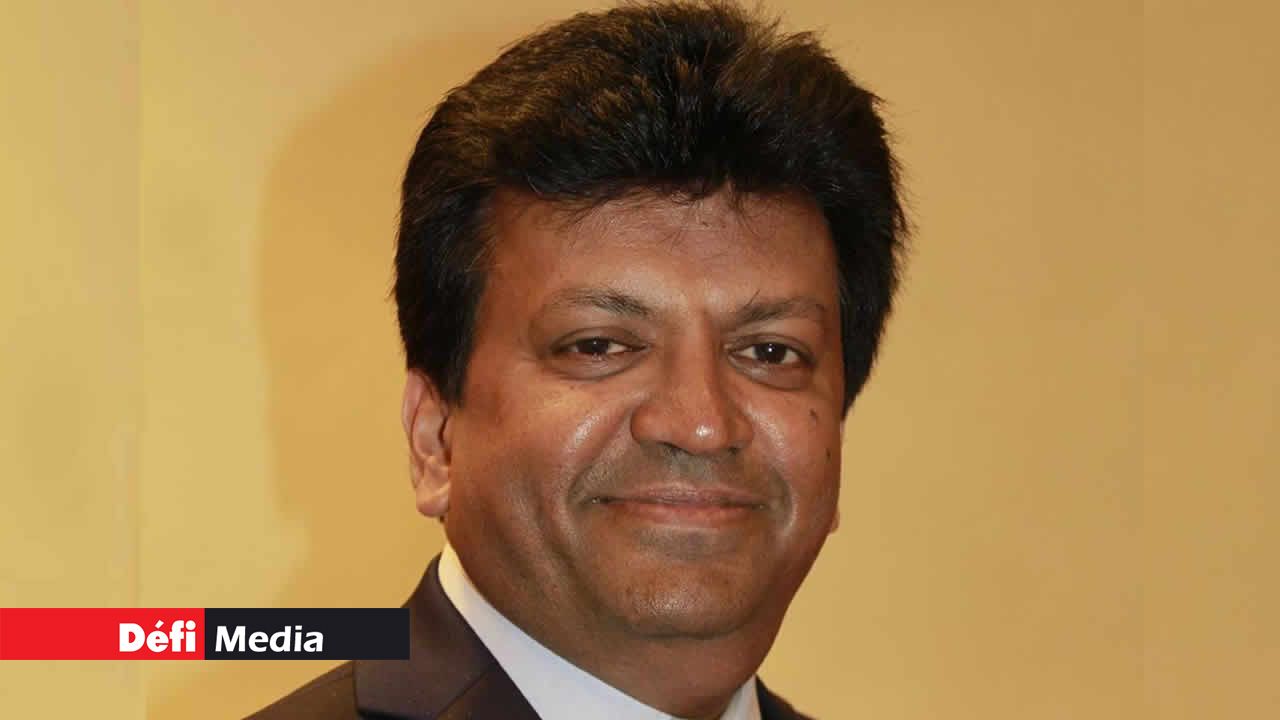
[Blog] THE MOUNTAIN HAS BROUGHT FORTH A MOUSE
By: PRADEEP JEEHA
This article is intended to reiterate small cane planters’demandfor a fair and equitable minimum price of Rs 2,500. /= per ton cane. After the roaring pre-budget publicity stunt of Government that raised unnecessary expectations among small cane planters the government’s budget 2019 has finally given birth to a small mouse.
Since a year we have been shouting against the injustice committed by the MSS against small planters. We have been calling for a holistic approach to find solutions that will provide for the development of sustainable cane industry with a fair and equitable distribution of all incomes derived from the cane and its by-products. The Prime minister even labelled us as “demagogues” after his 1st may political rally. Yes we accept this label if it can help break down the pervert system and methods developed by the sugar barons to fleece the small planters. If fighting for an income of Rs 2,500 per ton of cane is demagogy then we are proud to be called demagogues.
But then can the Prime minister explain how he came up with the figure of Rs 25,000. /= per ton of sugar for crop 2019 for ALL cane planters (budget speech 2019)? Why did he give in to the demands of the demagogues? Is he alsoindulging in demagogy? A note of caution to those reading paragraph 73 of the budget speech. He speaks of benefits of Rs 25,000 per ton sugar to all planters on the first 60 tons of sugar accrued- meaning that the benefit is not restricted to small planters only. Sugar barons are also having a bite of the pie that should have been dedicated to small planters only. This measure is a sham - a hoax that must be denunciated with force and vigour.
Somebody has rightly said that if a lie is not rebutted within 24 hours then people have the tendency to consider it to be true. It is therefore our duty to call off the bluff of the Prime Minister as far as the measures concerning cane sector are concerned.Planters have been benefitting from discounts on SIFB premiums since 2009 as well as from relief on payment of CESS fees. As for the advances made under the FIELD OPERATIONS REGROUPING & IRRIGATION PROJECT (FORIP) scheme financed by the EU since 2006 nobody has ever been made to repay for the same. Mr Jugdish Bundhoo who was the officer in charge of the implementation of the scheme at the MSA and who is now CEO of the MCIA should know better. Instead of bragging about the waiver Government must explain why the FORIP scheme was abolished in 2015.The only new measure attracting our attention is the 50% repayment of the advance on fertiliser by all planters who availed themselves of this wrongly planned and wrongly executed measure announced at the end of 2018. It is worth noting that this advance has been made out of the small planter’s fund of the MCIA.
Let us now turn to paragraph 73 which reads as follows:“I am pleased to announce that for crop 2019, all planters will benefit from a special unprecedented price of Rs 25,000 per ton of sugar for the first 60 tons of sugar accrued to them. This is more than double the price they would otherwise have obtained.
What will happen to planters’ income for crop 2020 and thereafter is any body’s guess. A closer look at the attempted publicity stunt of the Prime minister through this measure reveals that this ill-conceived plan is just a smokescreen not to say a hoax that will backfire lamentably. First contrary to popular belief, the budget is talking about BENEFIT and not about payments. Sothe small planter will never take home Rs 25,000. /= per ton sugar. Second, the claim that this measure is double what the planters would have otherwise received is a sham, According to his own minister of agriculture and the MCIA planters have supposedly benefitted Rs 18,300 per ton sugar for crop 2018out of which insurance and cess waivers amount to Rs 1,000 ./ per ton sugar. Another deduction is the levy on imported sugar amounting to Rs 275. /= Mts.Thereafter a further deduction of Rs60. /= Mts is applicable on advances made by the MSS. The additional benefit therefore amounts to Rs 5,365. /= only per ton sugar or Rs 300m in aggregate. Third the benefit will accrue to all planters for the first 60 tons of sugar accrued meaning that the measure is not restricted to small cane planters only. Once again the sugar barons are being fed through the backdoor in the name of small planters. The miller also will also earn Rs 25,000 per ton sugar on the same basis that it is being actually paid. The gander will therefore gulp what was meant for the goose. Fourth no mention is made as to the source of financing of the extra Rs 300m.Is it going to be through the reserves of the Bank of Mauritius, the Consolidated Funds (taxpayer’s pocket), the SIFB reserves or the reserves of the CEB - meaning payment from electricity consumers? The SIFB and the CEB are paying heftily since 2012.In this regard one can only say that Government is robbing Peter to Pay Paul. The recent renewal of Alteo’s power purchase agreement with the CEB is a vivid example of how Government is dipping into the pockets of electricity consumers to pay the IPPs. How on earth can a unit of electricity from locally produced bagasse be remunerated at the same rate as a unit of electricity produced from imported coal. The same IPPs who run the sugar mills yet have the guts to refuse paying cane planters on the basis of imported molasses for locally produced molasses.
The small cane planters do not want Government subsidies financed by taxpayers when there is enough money in the cane that is unevenly distributed. Government is only asked to play its role as an impartial arbitrator so that the sugar barons and the small planters receive their fair share of income without penalising the tax payer and the electricity consumer, or denying the needy from the much needed social assistance.
Having said so, Rs 25,000 per ton sugar does not equate to Rs 2,500 per ton cane which the small planters are claiming since the 2018 crop. Nobody in this government seems to understand that small planters are no longer interested to be paid in sugar equivalent for the canes sold by them. Payment in sugar equivalence means dependency on sugar extraction rates on which the small planter has no control. The sugar output is further based on the regions in which the planter is located and his cane output. A benefit of Rs 25,000. /= per ton of sugar to a small planter with a sugar extraction rate of 60% amounts to only Rs 1,500./= per ton cane which is very far from the Rs 2,500 per ton cane for which the small planters are fighting. Even with an extraction rate of 80% the planter will benefit only Rs 2,000 per ton cane. The actual receipt will be much lower when deducting the (notional) CESS payments and SIFB insurance waivers. Our political lords fail to grasp that the land of small cane planters are less fertile than those of the sugar barons. On an average they produce 27 MT cane per acre. As a result it takes 14 to 15 tons of cane to produce a ton of sugar for the small planter whereas the sugar barons produce a ton of sugar out of 10 tons of cane. The table below is ample proof of who is actually benefiting from the budget proposal and justifies why we call it a sham.

Furthermore not a single word has been uttered about the direct by products of cane that is molasses and bagasse. One must rightly question how much will be the revenues from these sources for crop 2019.This measure is therefore a mere sugar coated pill not to say a political ploy meant to dupe the small planters and obtain their votes at the next general election. Unfortunately for the spin-doctors of Government the small planters will not subscribe to piecemeal stopgap solutions to their problems. What is required is a holistic approach that will be sustainable for one and all overtime.
To conclude this government has neither the willingness, nor the ability /competence to cater for the small planters. However it can no longer afford to drag its feet on the small cane planters’ plight anymore. The World Bank does not have a magic wand to solve the problems and the distortions created by the sugar barons and the MSS. Government must be able to ascertain the exact cost of producing a ton of sugar, a unit electricity from Bagasse and a litre of rum or other products from Molasses. It has the necessary manpower and tools as well as all the legal & institutional arsenal to do so.A financial investigation on the way the MSS has been diverting away money from the planters to the millers and the refiners is also of utmost importance. Only then will Government be able to gauge the magnitude of the problem and come up with meaningful solutions.

Notre service WhatsApp. Vous êtes témoins d`un événement d`actualité ou d`une scène insolite? Envoyez-nous vos photos ou vidéos sur le 5 259 82 00 !





















